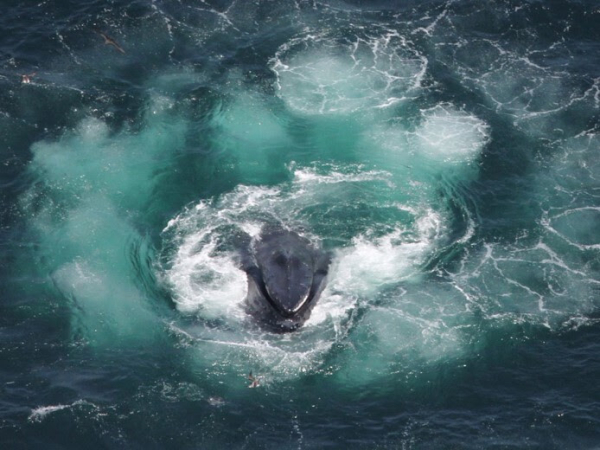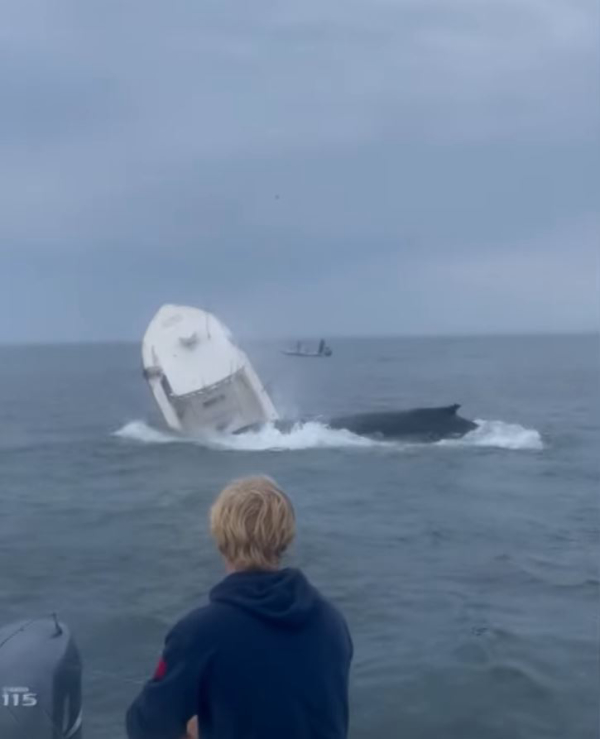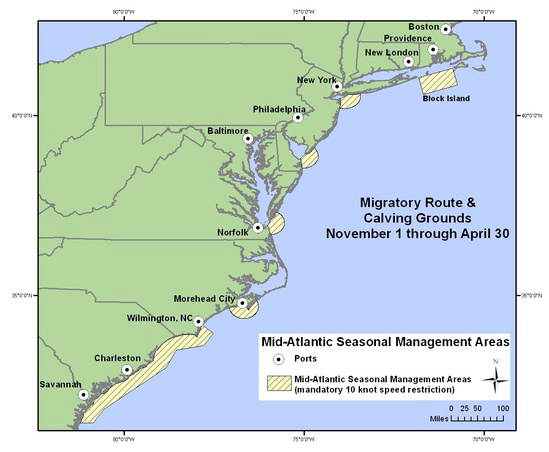
There are fish tales, and then there are fish tales.
Not many boaters can top the tale told by Greg Paquette and buddy Ryland Kenney of the day an 80,000-pound humpback whale landing on their boat, capsizing it and catapulting them into the sea.
By now, the video has been seen by pretty much everyone worldwide with a smart phone, but it’s still worth reviewing as some species of whales become ever more numerous in U.S. waters.
Paquette, who was thrown overboard, reported that he and Kenney were fishing off Odiorne Point southeast of Portsmouth, New Hampshire in their 23’ Parker center console and minding their own business when BOOM!
A whale up and jumped on top of their boat.
It was no contest—the Parker, weighing about 2,750 pounds less engine and gear, flipped like a rubber ducky.
Kenney jumped from the boat into the 55-degree water, but Paquette, who had on a life jacket, was thrown, forcing him to swim before the boat fell on him. The boat completely capsized, but true to Parker advertising, stayed fully afloat.
This would be a pretty hard tale to believe, but there was a camera there to record it—as there are cameras pretty much everywhere to record everything these days.

Two teens, Colin and Wyatt Yager, were fishing very close by when it happened. Colin had his rod in one hand and a phone in the other. He recorded the video that shot round the world in no time.
Actually, it looks a bit like an 80,000 pound bass coming up on a top water plug.
But scientists say the whale had no ill intentions, to the boat at least. It was intent on gulping down baitfish, came roaring up from the deep to take a big scoop from the bait school, and happened to breach exactly where the boat was positioned. Whales frequently feed this way, pushing their head and jaw above the surface so that whatever they have scooped up falls down their throat.
Noah could perhaps relate.
The humpback in question had been observed feeding on Atlantic menhaden for several days in the Piscataqua River between Maine and New Hampshire, per the Coast Guard. USCG had issued notices to mariners so that they could watch out for it.
The whale survived the collision with no ill effects, apparently—it kept right on feeding in the area for several hours according to nearby anglers, while Paquette and Kenney were rescued and had their upside-down boat towed back to port with one whale of a tale to tell.
Whale encounters are rare in most southeastern waters but I had one I won’t forget. It started out as a day of bonefishing with Scott Deal, Maverick boats founder, in Biscayne Bay during the Miami Boat Show.
We did not round up any bonefish that day, mostly because we spent our time on the water trying to push a 20-foot sperm whale—a juvenile by sperm whale standards--back to deep water. The poor creature was grounded in about 2 feet of water when we happened by, and after some discussion we got in the water and tried to push it off.

The whale was completely peaceful and cooperative, seeming to understand we were trying to help it.
Look into those eyes and you had the feeling there was somebody in there. The skin was surprisingly soft and warm—I don’t know why I expected it to feel cold like a fish but I did.
We grunted and pushed and heaved and eventually it swam off to deeper water, leaving us with a whale of a tale to tell.
But a couple days later, according to the Miami Herald, a 20-foot sperm whale was found dead in Biscayne Bay. Nature takes its own course.
I later wrote about it in the Tampa Tribune, and immediately found out that you are not allowed to mess with whales, including efforts to save them, as result of a very stern call from the enforcement side of U.S. Fish & Wildlife.
I’ve never been sorry we tried.
Biggest issue with whale today is that there are federal slow speed rules along much of the Atlantic Coast to protect right whales during certain times of the year. Anglers say the 10-knot rule makes it impossible to fish offshore during the enforced periods. The rule is under fire from ASA and boating organizations, but seems likely to stand for the foreseeable future. Read about it here: https://www.fisheries.noaa.gov/national/endangered-species-conservation/reducing-vessel-strikes-north-atlantic-right-whales
Bottom line is if you boat where whales are likely—and they’re getting more likely as the years go by in U.S. waters, though numbers are down elsewhere—keep a sharp eye for encounters of the cetacean kind.
Frank Sargeant
Frankmako1@gmail.co